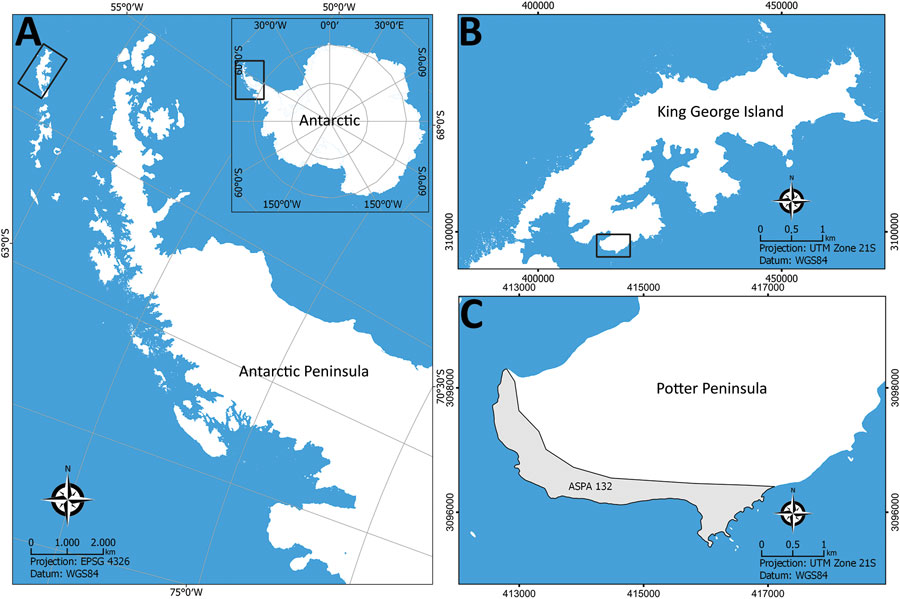Volume 28, Number 10—October 2022
Dispatch
Molecular Detection of Histoplasma capsulatum in Antarctica
Figure 1

Figure 1. Sampling locations for study of Histoplasma capsulatum in Antarctica. A) Location of the Antarctic Peninsula in the Antarctica continent; B) King George Island; C) Potter Peninsula and the Antarctic Specially Protected Area ASPA N°132. Source: SCAR Antarctic Digital Database (https://www.scar.org/resources/antarctic-digital-database).
Page created: August 25, 2022
Page updated: September 21, 2022
Page reviewed: September 21, 2022
The conclusions, findings, and opinions expressed by authors contributing to this journal do not necessarily reflect the official position of the U.S. Department of Health and Human Services, the Public Health Service, the Centers for Disease Control and Prevention, or the authors' affiliated institutions. Use of trade names is for identification only and does not imply endorsement by any of the groups named above.